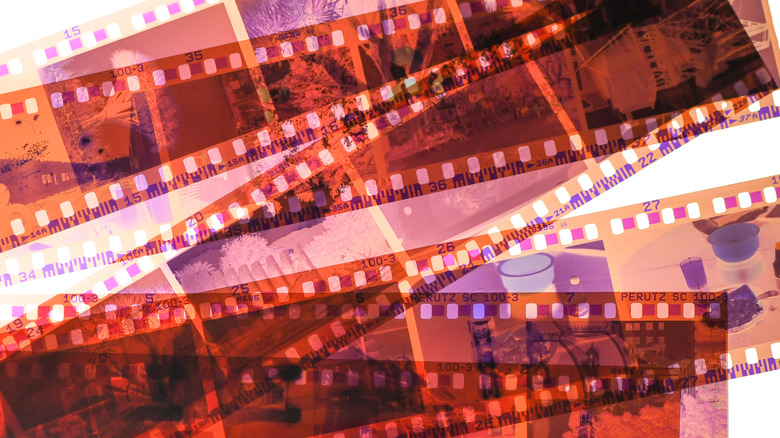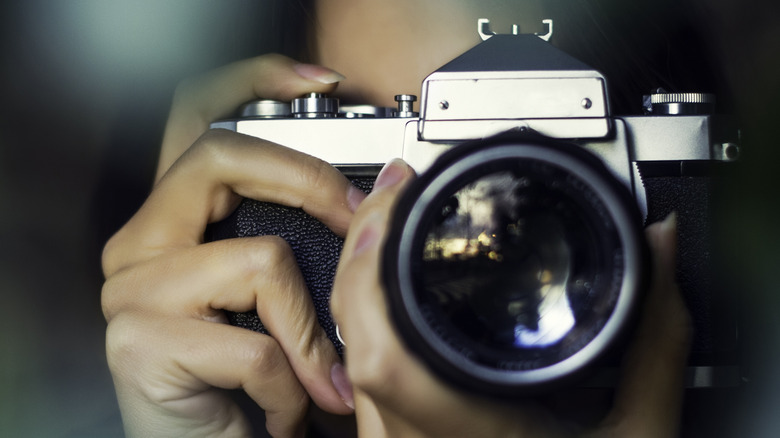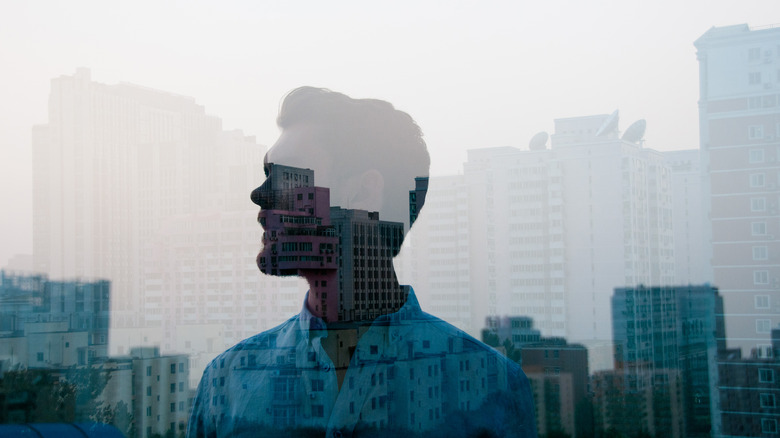How To Take Double Exposure Photos With A 35mm Film Camera
In the 2020s, digital photography is all the rage. After all, with a good smartphone and some decent photography tips, you can churn out exceptional shots left and right. At the same time, just because digital has become so prominent doesn't mean it has totally replaced its predecessor. Film photography may not be as big as it was in previous decades, but it has yet to fade entirely. Some prefer its richer colors, interesting textures, and overall visual style that can't quite be replicated with a phone or digital camera.
Of course, if you're not into making the photos of your DSLR camera look like film and want to dive into the world of real film photography, there are a few things you might want to know. First and foremost is the kind of camera you want. You also need to decide if you want black and white or color and what kind of film you want to take pictures on. As far as film types, among the more popular choices out there is 35mm, which is still widely available and is relatively easy and affordable to get processed. Not to mention, with a 35mm camera, getting cool double exposure shots — images featuring two subjects simultaneously, with one appearing transparent over the other — is a breeze.
If you're looking to dive into double-exposure photography, here's how it's done on 35mm.
Double exposure shots aren't too hard to pull off on 35mm
As the name implies, double exposure cameras entail exposing the same section of film to light twice. When you press the capture button to take a picture, the shutter opens, light passes through the aperture, and the film reacts within. This creates a negative on the film, which needs to be developed — something you can do at home without a darkroom — to become a viewable picture. Repeating this process on the same portion of film creates a ghostly, transparent effect with the subject of the second exposure. Procedurally, this is a pretty straightforward shooting style. In the event your camera doesn't have a built-in double exposure setting, here's what you can do.
- Load your 35mm film roll into your camera as normal.
- Take the shots of your secondary subject first. It's wise to go through the entire roll for this step. Alternatively, you can mark your film ahead of time, this way you don't have to go through an entire roll and you can ensure your second pass matches up with your first.
- Rewind your roll without letting the entire thing go back into the canister and take your second set of shots. With that, double exposures are born.
If your camera features an advance lever and also a rewind button, there's the method of "tricking" your camera by using the rewind button to go back to the previous frame before the camera moves to the next.
Things to keep in mind when shooting double exposures
As with any art form, there's no wrong way to go about double exposure photography. If you want to get wild and creative with your shots, then by all means do it. At the same time, that's not to say that it's impossible to mess up on a technical level, or that there aren't some things worth keeping in mind when exploring this fun and unique photography style. Most importantly is the matter of exposure itself — the amount of light let into the camera — and how the type of 35mm film, your camera settings, and your two chosen subjects relate to it.
To get the most out of your 35mm double exposures, you want to pick the right film. Black and white is generally a safe bet, especially for those new to the process, as it takes well to overexposure while still producing quality shots. If you do want color, though, it's in your best interest underexpose. In doing so, you preserve the shadows while minimizing highlights, which will largely wiped away by the second exposure. The subject of your second exposure will be present in the shadows of the first. You can mess around with the exposure settings on your camera to make this happen. For example, if you're using ISO 400 film, you'll want to set your camera to ISO 800.
Double exposure photography with 35mm is simple in principle, but to master it is a whole other subject. With some trial and error and fidgeting with your camera's settings, though, odds are you'll make some phenomenal images in no time.


